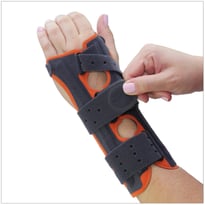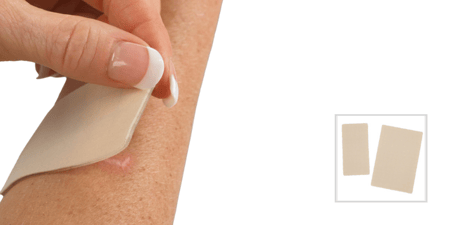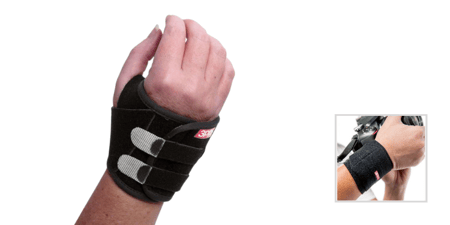The scapholunate (SL) ligament runs between the scaphoid and the lunate and provides crucial support to allow appropriate carpal mechanics at the wrist during motion and use of the hand. Injury and tearing of this ligament can occur with trauma or as a progressive degenerative weakening of the ligament. The extent of the injury ranges from a partial tear or attenuation to a full rupture of the ligament and from dynamic instability (a change in the position of the scaphoid and lunate only with motion or grip) to static instability (a change in the position of the above carpal bones without stress). People with an SL ligament injury often present with pain and swelling at the radial, dorsal wrist, weak and painful grip, and snapping or popping at the wrist.
Conservative Management of a Scapholunate Ligament Injury
There are 3 main treatments that a therapist can provide conservatively for a SL ligament injury:
3 Main Treatments for a Scapholunate Ligament Injury
1. Immobilization of the Wrist
Immobilization with a wrist orthosis in the acute stages is a common intervention provided by a therapist in the acute stage. Immobilization is recommended for up to 8 weeks to decrease stress on the healing and inflamed tissues. It has been supported that dart thrower’s motion (DTM) could be used in the acute stages of an SL ligament injury with suggestion that there is decreased motion at the SL interval with performance of this path of motion at the wrist. However, a cadaveric study recently found that there is stress to the SL interval with performance of DTM when there is ligament attenuation, so you may want to avoid even this motion early on if an attenuation is diagnosed or even suspected.
The Fix Comfort Wrist Brace offers the needed immobilization at the wrist for an SL ligament injury.
2. Wrist Stabilization
Wrist stabilization involves strengthening the SL “friendly” muscles. These are the muscles that pull the scaphoid into supination; stabilize the SL joint and decrease space between the scaphoid and the lunate. These muscles are noted below. Stabilization exercises can be performed isometrically in the acute rehab stages.
| SL “Friendly” Muscle | Action |
| Flexor Carpi Radialis (FCR) | Wrist Flexion and Radial Deviation |
| Extensor Carpi Radialis Longus (ECRL) | Wrist Extension and Radial Deviation |
| Flexor Carpi Ulnaris (FCU) | Wrist Flexion and Ulnar Deviation |
| Abductor Pollicis Longus (APL) | Thumb Abduction |
The extensor carpi ulnaris (ECU) strongly pronates the scaphoid and therefore contributes to widening of the SL interval when there is ligament deficiency. Use and strengthening of this muscle should be discouraged in a rehab program.
Avoid exercises that activate the “unfriendly” extensor carpi ulnaris which, when contracted, rotates the distal row and the scaphoid into extreme pronation thereby widening the gap and the SL malalignment.
3. Proprioceptive Exercise
Proprioception at the wrist has been found to be important to dynamic stability, so proprioceptive exercises such as tossing and catching a ball or bouncing a tennis ball on a racket can be important for an individual with SL ligament injury if there are proprioceptive deficits.
Blog References: For more information on this topic, click to see the references for this blog post





